Spokane County, Washington
Sphingidae
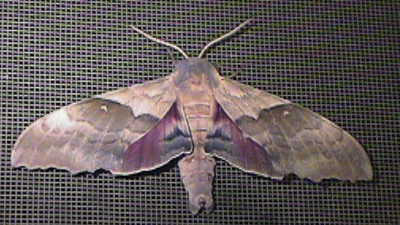
|
|
Created, inspired by and dedicated to Zana Goulding, August, 2005; June 25, 2012 Updated as per Butterflies and Moths of North America website, formerly USGS, August 2005 Updated as per personal communication with Kevin Brown (Arctonotus lucidus); March 2010 Updated as per James P. Tuttle's The Hawk Moths of North America, July 8, 2010 Updated for Hemaris thetis, July 8, 2010, replacing H. diffinis; probably H. senta is also H. thetis. Updated as per personal communication with Erin Parker (Sphinx drupiferarum, Spokane, June 12, 2010); July 8, 2010 Updated for Hyles euphorbiae, Spokane, Spokane, Washington, as per personal communication with David Droppers (BAMONA) Updated as per personal communication with Billie Carter (Smerinthus ophthalmica, Spokane, July 13, 2014); July 15, 2014 Updated as per personal communication with Carl D. Barrentine, July 4, 2022
|

In 2006 Zana reports Pachysphinx modesta June 28; Hyles lineata mid June; Smerinthus ophthalmica late June.This page is inspired by and dedicated to Zana Goulding who sent me the image of Pachysphinx modesta/occidentalis ?? at the top of the
page. Zana also reports Hyles lineata on August 11, 2005 and August 20, 2005.
Hopefully I have accurately determined Zana's moth to be P. occidentalis based on stronger maculations on the forewing, particularly in the basal area (antemedial line). The very similar P. modesta has a paler, indistinct marking in the basal area as opposed to the darker, more distinct irregular line of P. occidentalis. The moth depicted, however, also has characters more in line with P. modesta.
In June of 2012 Zana sent me a nice image of underside of a Smerinthus ophthalmica male. Zana writes, "Hi Bill, found this one on the garage today, it was too high up for me to get any real good shots. It did appear to have some sort of eye and pinkish color on the underwing; maybe 1.5 inches long in the body."
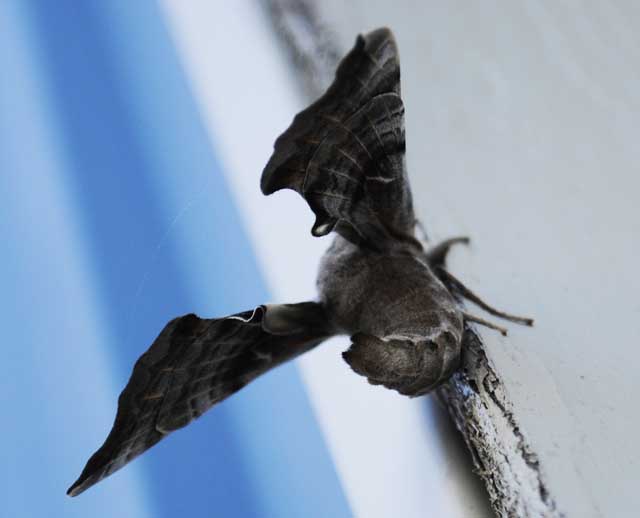
Smerinthus ophthalmica male (verso), Spokane, Spokane County, Washington,
June 24, 2012, courtesy of Zana Goulding
Thanks also to Kevin Brown who encountered many Arctonotus lucidus (now Proserpinus lucidus) in Mica, Spokane County, in early March 2010.
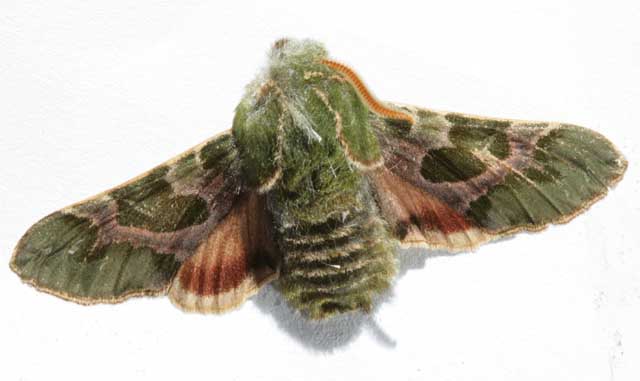
Proserpinus lucidus, Mica, Spokane County, Washington,
March 1, 2010, courtesy of Kevin Brown.
Kevin writes, Wednesday, March 3, 2010, "Hello,
"I work at a Spokane County shop in Mica, WA. Often during the year in the morning there are various insects on the metal siding, presumably for warmth.
"Monday, March 1, was warm in the 50s, and whan I came to work there were three sphinx moths on the sidewalk. They haven't moved since. Tuesday morning there were 5 more all close to the building foundation."
I replied, "Hi Kevin,
"They are probably being attracted by a night security light. I would love to see pictures if you have a digital camera."
"Can you tell me anything about it?"
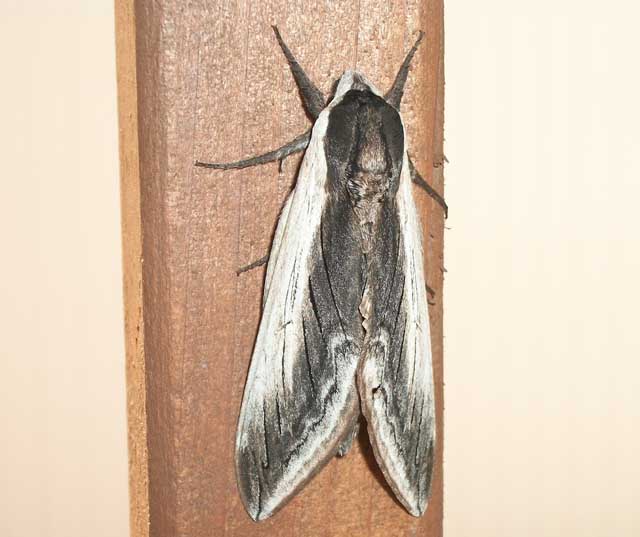
Sphinx drupiferarum, Spokane, Spokane County, Washington,
June 12, 2010, courtesy of Erin Parker.
I reply, "This one is Smerinthus ophthalmica a close relative of Pachysphinx occidentalis. I suspect it was drawn to house lights and simply came to rest in the location you mention. This species does not feed as an adult moth. It does appear to be a female, and it may have been laying eggs on the birch tree you mention. The adult moths usually only live for about 7-10 days, and it may have simply expired where you found it. There is more info on the ophthalmica file which can be accessed via the thumbnail checklist below. Thanks for thinking of me."
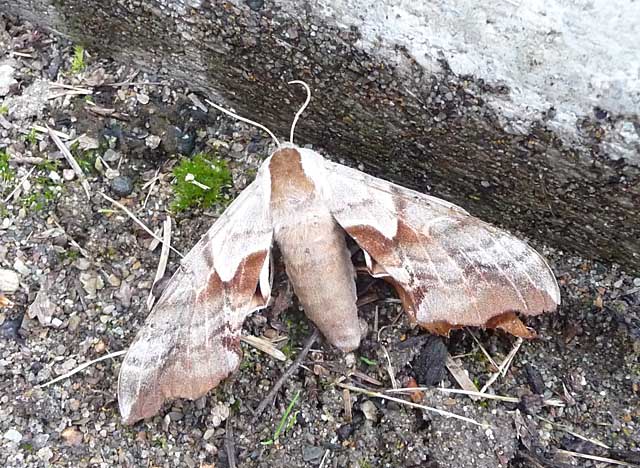
Smerinthus ophthalmica, Spokane, Spokane County, Washington,
July 13, 2014, courtesy of Billie Carter.
A "WO" after the species name indicates that I have no confirmed reports of this species in Spokane County, but I (William Oehlke) expect that this moth is present. A USGS (now BAMONA) indicates the moth is reported on the USGS website and/or in Moths of Western North America, #2. Distribution of Sphingidae of Western North America, revised, an excellent little booklet available through Paul Opler.
Please help me develop this list with improved, documented accuracy by sending sightings (species, date, location), preferably with an image, via email to Bill Oehlke.
Many thanks to Carl D. Barrentine who provides images and data over the years for the following species in Spokane:
Sphinx drupiferarum: May 30; June 8; July 11;
You can visit Carl's excellent photos at
https://bugguide.net/adv_search/bgsearch.php?user=&taxon=43878&description=&location%5B%5D=WA&county=Spokane&city_location=&adult=&immature=&male=&female=&representative=>
Sphinx vashti: June 1;
Pachysphinx occidentalis: July 9;
Paonias excaecata: June 4; July 7;
Paonias myops: May 17; June 6; July 1;
Smerinthus ophthalmica: May 26; June 15, 19; July 17; August 21; Sept 14;
Hyles gallii: June 25;
Hyles lineata: April 27; May 5, 16-21; June 4; August 16, 28; September 8;
Proserpinus lucidus: March 11-15; May 4.
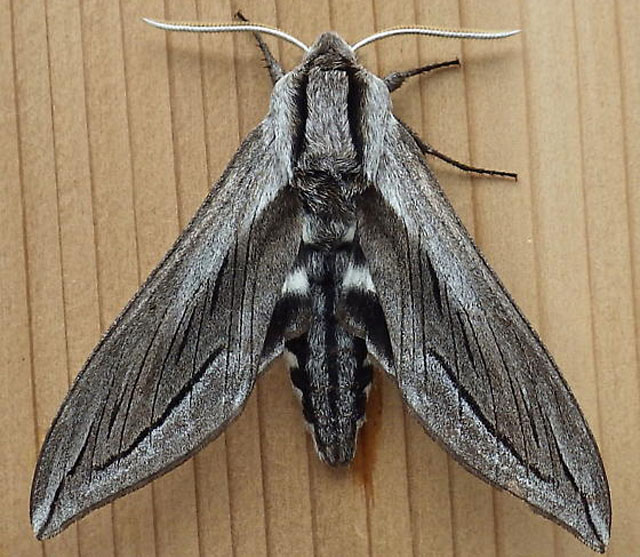
Paonias myops Spokane, Spokane County, Washington,
June 1, 2018, courtesy of Carl D. Barrentine.
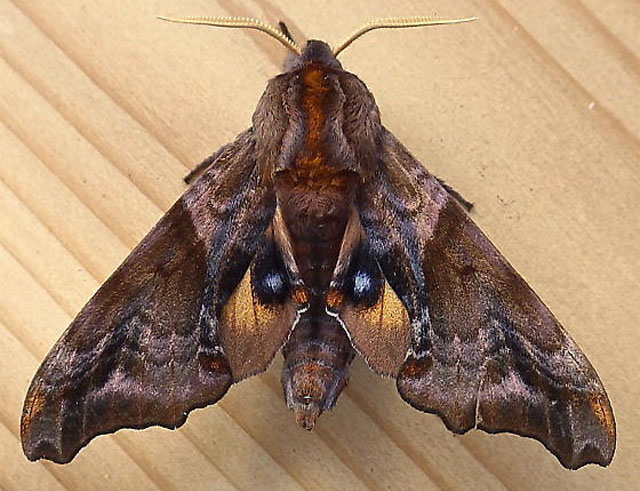
Paonias myops Spokane, Spokane County, Washington,
July 1, 2019, courtesy of Carl D. Barrentine.
Visit Washington: Catocala (underwng moths).
Sphinginae subfamily
May, June, July; Carl D. Barrantine
Smerinthini Tribe:
Pachysphinx occidentalis, Carl D. Barrentinel July
Smerinthus ophthalmica, Billie Carter, July 13, 2014, Spokane Smerinthus ophthalmica, May, June. July, August, September, Carl D. Barrentine, Spokane
Macroglossinae subfamilyDilophonotini tribe
Macroglossini tribe
Hyles lineata, Zana Goulding, August, 20, 2005, Spokane Hyles lineata, April, May, June, August, September, Carl D. Barrantine, Spokane Hyles lineata, Zana Goulding, mid June, 2006, Spokane
Proserpinus lucidus, March, May, Carl D. Barrentine Proserpinus lucidus, Spokane, Washington, March, 2011, courtesy of Zana Goulding.
|
Enjoy some of nature's wonderments, giant silk moth cocoons. These cocoons are for sale winter and fall. Beautiful Saturniidae moths will emerge the following spring and summer. Read Actias luna rearing article. Additional online help available.
Use your browser "Back" button to return to the previous page.
This page is brought to you by Bill Oehlke and the WLSS. Pages are on space rented from Bizland. If you would like to become a "Patron of the Sphingidae Site", contact Bill.
Please send sightings/images to Bill. I will do my best to respond to requests for identification help.
 Show appreciation for this site by clicking on flashing butterfly to the left. The link will take you to a page with links to many insect sites. |